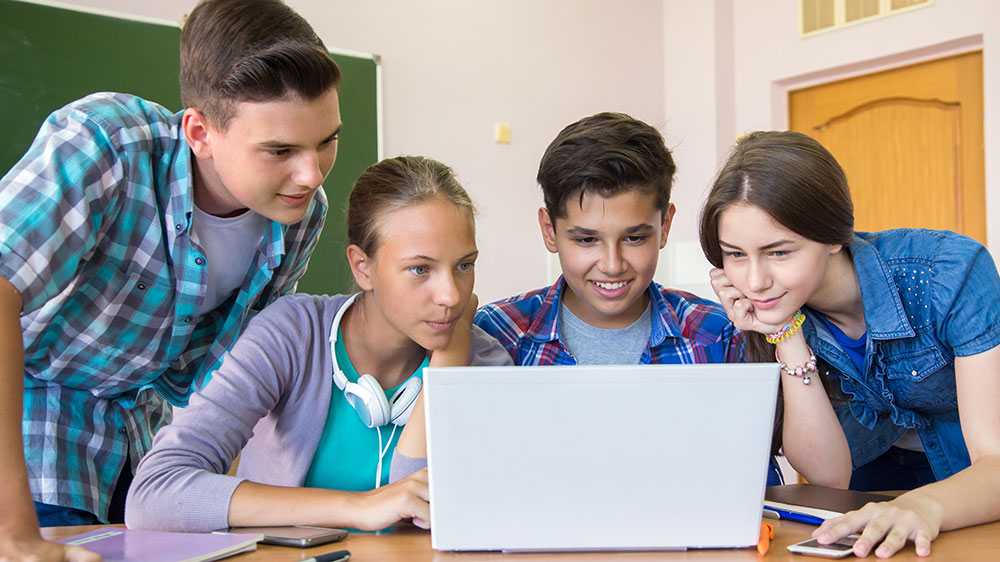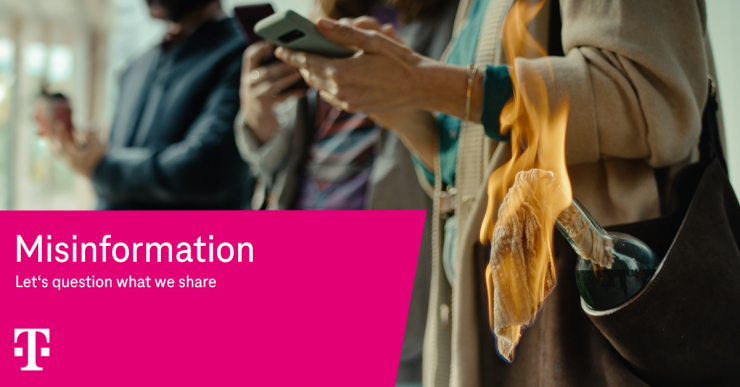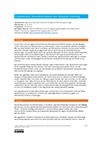
In order to prepare young people for these challenges, they need to be educated about disinformation and given the knowledge they require to critically assess information.
Using the example of a text (message), a picture and/or an audio collage, young people understand how framing is used and how they can recognize and analyse such techniques by setting frames themselves and presenting content from different perspectives. By working in teams and reflecting on their experiences, they are enabled to make informed and critical decisions and actively participate in society.
In order to explore the topic of framing in a variety of ways, the project idea offers three options for creating your own work. Young people can choose between text, image or audio for the implementation. There is an example and instructions for each option.
Note: When implementing the lesson, please ensure that you choose the examples in such a way that you do not create or disseminate any disinformation yourself.
The concept of framing is then explained as a way of consciously controlling news. The teacher/workshop leader gives examples of framing in the media, in advertising and in politics. (See background text: What is framing?)
Social form: Plenum
Together they look at the examples and discuss which means were used to change the content and perception in each case.
Based on the examples, the teams create their own work and change it to create different perspectives and reactions.
To do this, they draft a script in which they first plan a motif or story. In the next step, they consider together how they can change this information and implement it accordingly.
Examples:
A. Text about Lina Mertens
The text was created with Chat GPT and is based on the person Greta Thunberg. In the three variants, Lina Mertens (fictional person) is described from different perspectives and creates different images of the person in the readers' minds. The teams analyze the texts and create their own versions. Use our AI experiment kit https://chat.ki-entdecken.de.
B. The image of “running people on the beach”
The image of “running people on the beach” was created with image-generating AI and is based on different backgrounds, colors and filters or the respective image descriptions. The individual image elements are supplied so that the teams can experiment with the material themselves in addition to analyzing it.
C. The audio recording on Europe
The example of the audio recording shows how language, sound and music can change a message. Based on the audio script, the young people can also use a smartphone or tablet to create their own versions or record and analyze their own messages as audio.
Note: On request, anonymized access for students to use Chat GPT can be provided free of charge.
Social form: Group work/partner work
The teams take it in turns to present their results without comment. The rest of the class classifies the results in terms of content and names the different “frames” that were used. These are then commented on by the respective groups.
To conclude, ask how the young people think about the topic of framing based on their experiences and evaluate the topic of disinformation together in a discussion.
Here you can find external links to platforms that offer helpful information on the complex topic of disinformation.
Find here all the materials you need to implement the project idea. They are available to download free of charge.
Project idea material 1: Complete document
 2024: Important elections are coming up worldwide, but the spread of disinformation via digital channels is increasing. Strengthening media literacy is crucial in times of fake news and populist movements to protect democracy and support young people.
Disinformation in times of AI
2024: Important elections are coming up worldwide, but the spread of disinformation via digital channels is increasing. Strengthening media literacy is crucial in times of fake news and populist movements to protect democracy and support young people.
Disinformation in times of AI
 Deutsche Telekom impressively demonstrates the destructive power of disinformation and calls on us to double check the content we share. At a time when misinformation is spreading faster than ever before, Deutsche Telekom is joining forces with its partner organizations to raise awareness of this pressing social issue.
No Hate Speech - No Chance for Misinformation
Deutsche Telekom impressively demonstrates the destructive power of disinformation and calls on us to double check the content we share. At a time when misinformation is spreading faster than ever before, Deutsche Telekom is joining forces with its partner organizations to raise awareness of this pressing social issue.
No Hate Speech - No Chance for Misinformation
Fake News – Strategies of Disinformation
Interactive learning module: Disinformation



